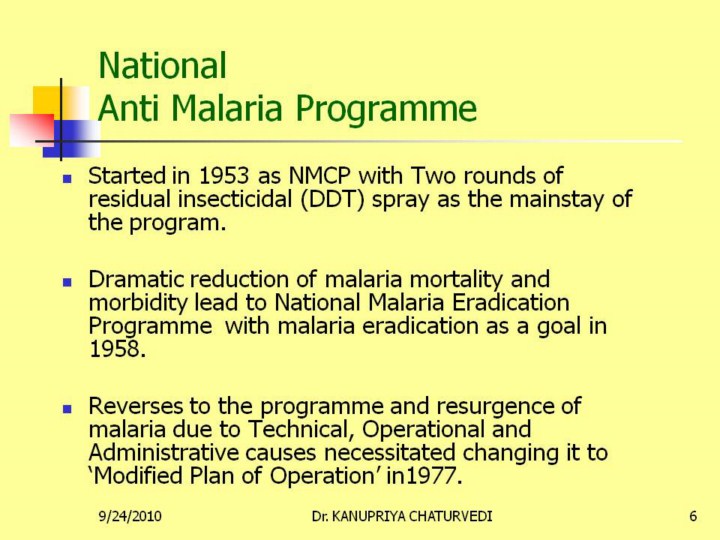| front |1 |2 |3 |4 |5 |6 |7 |8 |9 |10 |11 |12 |13 |14 |15 |16 |17 |18 |19 |20 |21 |22 |23 |24 |25 |26 |27 |28 |29 |30 |31 |32 |33 |34 |35 |36 |37 |38 |39 |40 |41 |42 |43 |44 |45 |46 |47 |48 |49 |50 |51 |52 |review |
 |
National Malaria control Program was launched in India in April 1953. It was based on indoor residual spraying twice a year in endemic areas where spleen rates were over 10%. The NMCP was in operation for 5 years. The results of the program were highly successful in that the incidence of malaria declined sharply from 75 million cases in 1953 to 2 million cases in 1958. Government encouraged by the success changed the strategy from control to eradication NMEP).in 1958. According to International standards the program was divided into Preparatory, attack, consolidation and maintenance phases. In the beginning NMEP was highly successful but soon setback appeared in the form of focal outbreaks . The resurgence had grown to epidemic proportions. The annual incidence of malaria escalated from 50,000 cases in 1961to a 6.4 million cases in 1976. Considering the resurgence Government of India, the program was modified and a “ Modified Plan of Operation was evolved In 1977. |